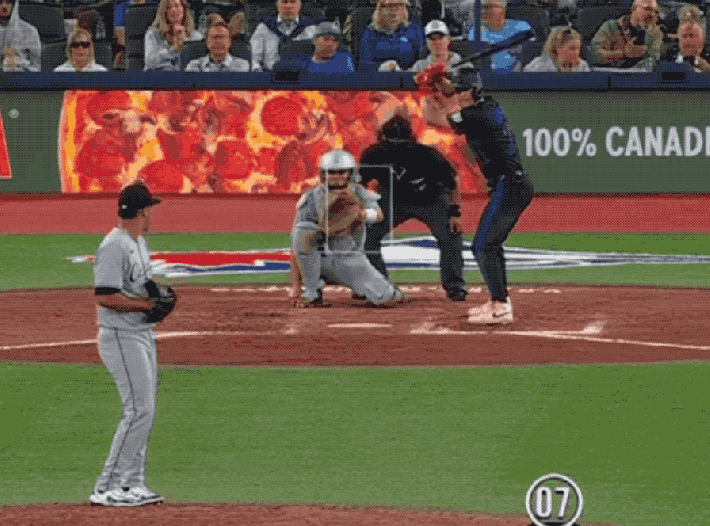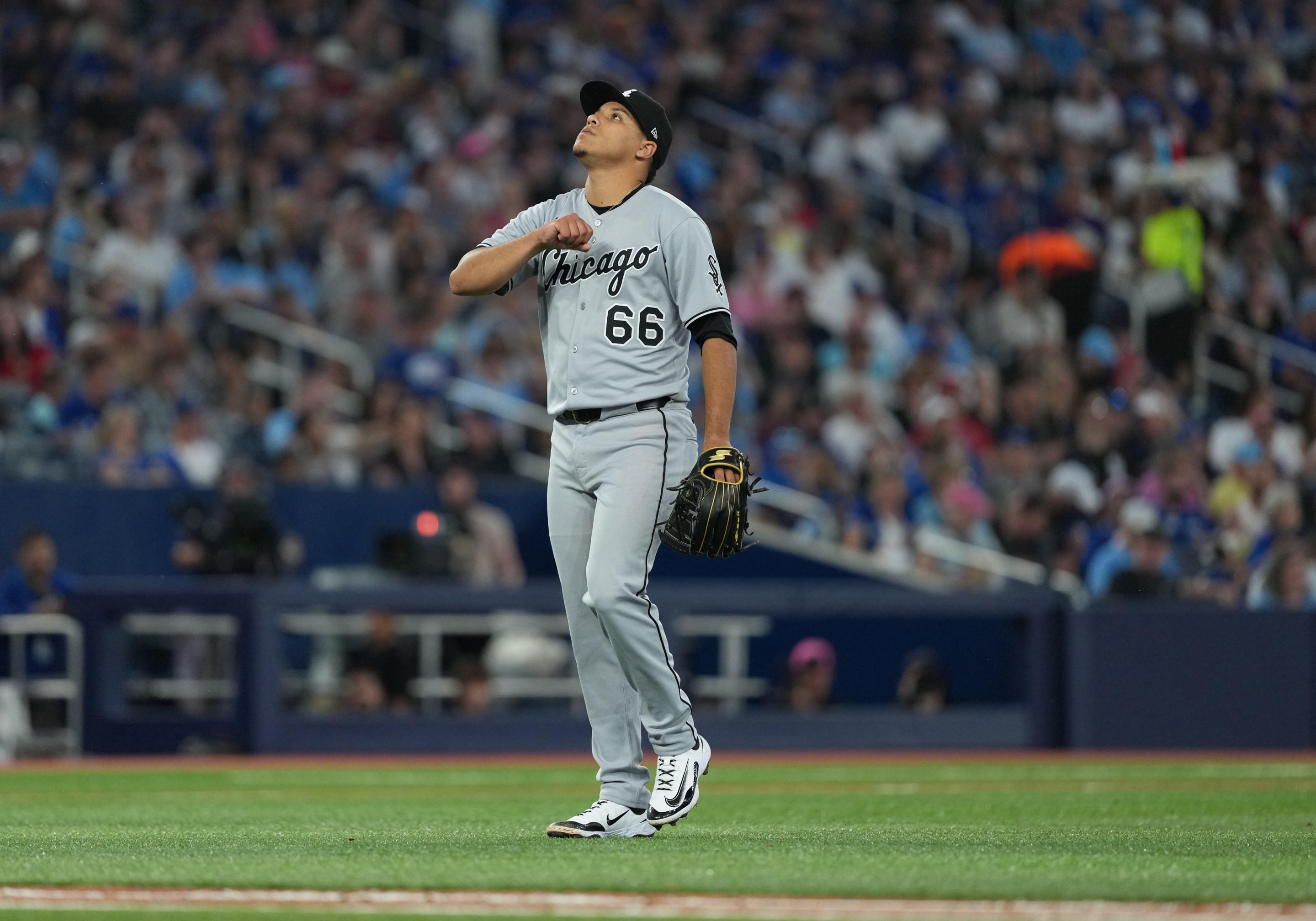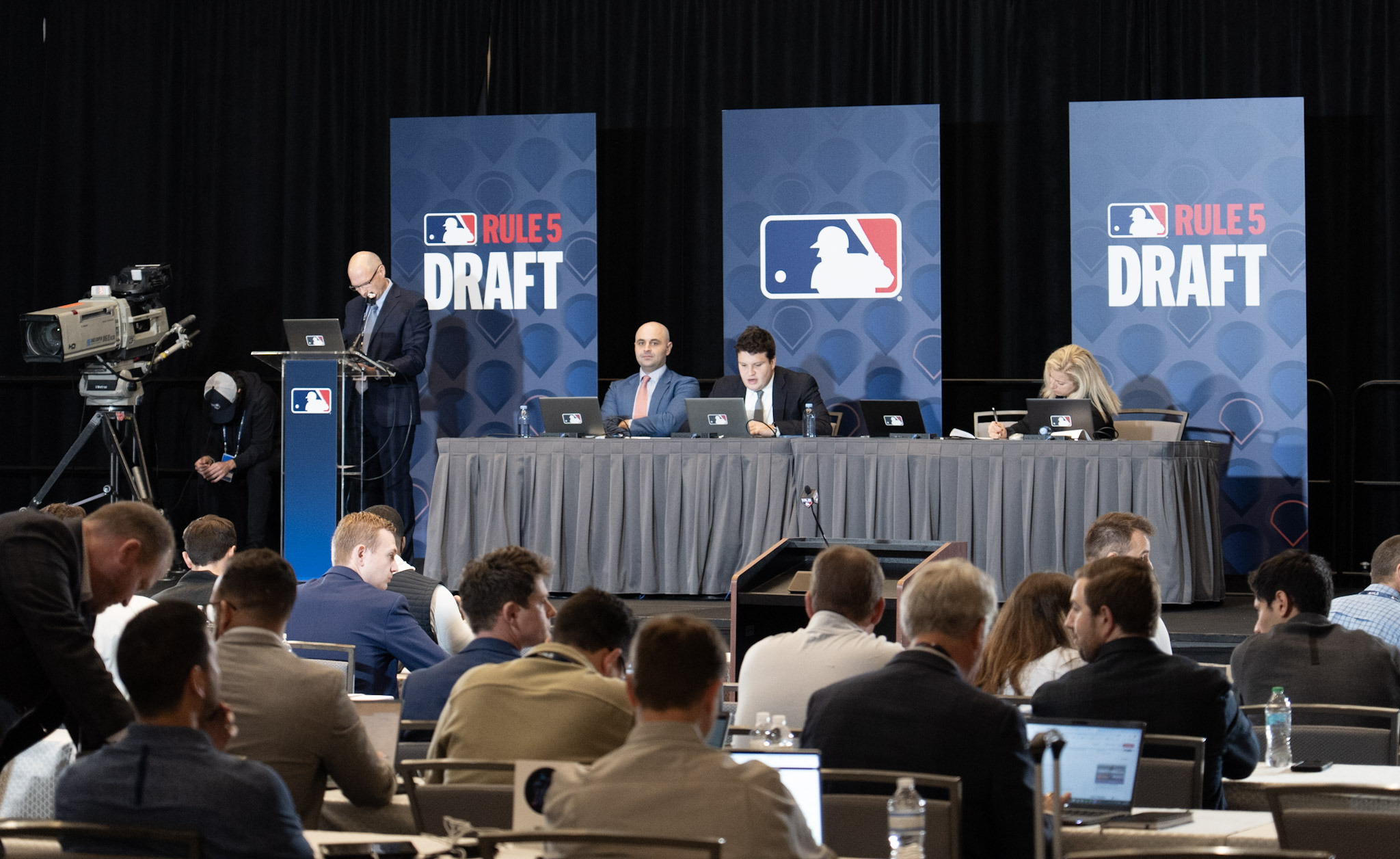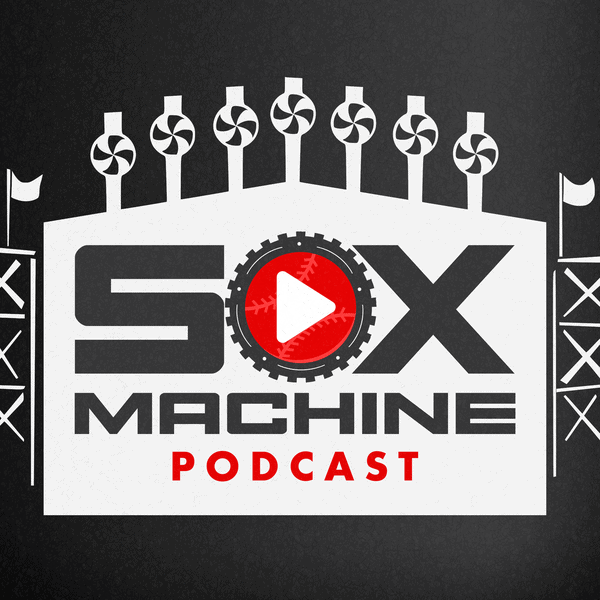When the White Sox informed Wikelman González that he was moving to the bullpen at the end of April, the hard news was paired with the solace that he was simultaneously getting promoted to Triple-A, which the 23-year-old seemed to regard as the real headline.
Less than two months later, the right-hander is already in the majors. And having faced and retired the likes of Vladimir Guerrero and Ketel Marte in his first two big league outings, he is understandably not currently inclined to be wistful about his days of starting.
"My first thought is that's good, that works for me," González said via interpreter of his reaction to moving to relief. "If the team needs me to do whatever it is, I'll do it. I'm here as part of this organization. I'm here to try to help the team to win games, and to become a really good pitcher."
González just turned 23 in March, and had already reached Double-A in the Red Sox system when he became the fourth piece in the Garrett Crochet trade last December. For all the control and inefficiency issues that made González's conversion to relief widely forecasted by scouts at the time of the deal, his youth and bat-missing stuff (92 strikeouts in 83⅔ innings) led some with the White Sox to hold out hope that he could still stick in the rotation.
But as an international prospect who was signed as a 16-year-old, González's timeline dictated a different course. The Red Sox added him to the 40-man roster to protect him from the Rule 5 draft before the 2024 season, so even just the White Sox optioning González out of spring camp used up the second of his three option years. When his first four starts with Double-A Birmingham showed the same brand of uneven command and high pitch counts, González's new club moved to get a surer return on their investment.
"I see him as a multi-inning reliever," said Chris Getz. "He's got a power fastball, pretty good breaking ball and a changeup that's been effective. He's a guy that can throw more than one inning. Still very early in his career and he's been a starter in the past. You don't want to close the door on anything, but we felt it was the right move for him and for the White Sox to get a little bit more experience in the bullpen and see where it takes him."
To the team's point, González's first two outings -- 4 IP, 3 H, 2 ER, 4 BB, 5 K, 0 HR -- have displayed both his intriguing talent and why his maturation into a reliable starter feels distant. He's sat 95 mph with his heater with big extension and flashed swing-and-miss secondaries that are effective to either side, while also piling up pitches and walking his way into jams. Each of his two-inning outings have contained one dominant frame and one laborious evil twin, but both feel like accomplishments at this stage of González's development.
"Every time you have a chance to face good hitters -- and especially here in the majors, that's like every day, right? -- I get better and my confidence gets stronger," González said via interpreter. "My debut was in Toronto, a beautiful ballpark. Of course I was a little nervous because it was the first time on a big stage, but I think after my first strikeout, I calmed down. And [Monday] my second outing, I was more relaxed, comfortable."
González's arsenal -- as many as six pitches at times last year -- has been pared down to a four-seamer, a changeup and seemingly a single breaking ball. While that very much lines up with a reliever trimming down their less effective offerings, González has thrown a curveball, slider and cutter at different junctures. He now credits the White Sox for helping him refine a depthier version of his curve, even if the appropriate label for it remains elusive.
"People call it a sweeper and other people call it a curveball, but I think it's more like a slurve," González said via interpreter. In either case, opposing major league batters have swung at it 11 times so far and only made contact on five of them.
In spring, Brian Bannister opined that González spent much of 2024 throwing more over the top in his delivery than what seemed ideal, and that his fastball would play up from a lower angle. Pitching coordinator Matt Zaleski (and Trackman numbers) confirm that González has dropped his arm angle slightly this year. But both Zaleski and González are more focused on a delivery cue with his front leg that they feel has taken his stuff and execution up a notch.


"The position of my left leg right now, I put it closer [to my body] and facing inward and that's helped me to have more control of my pitches and my body to execute my pitches," González said via interpreter.
As González works to get his strike-throwing to a consistent place, the unique level of coil in this move likely speaks to how much conscious effort is required to keep him from flying open. But as the White Sox rationalized when they moved him to the bullpen, deep counts and wasted pitches can't sidetrack a relief outing the way they can with a start. González throwing 48 pitches over two innings, as he did Monday night, doesn't have many reverberations to the rest of the pitching staff, but it might if he was counted on for six innings.
Moreover, with the White Sox bullpen lacking for impact stuff, and the White Sox as a team hitting 30 games under .500 before July for the second straight year, González working things out in Chicago fits just fine.
"I like Wikelman a lot," said Will Venable. "He's fearless. He's thrown strikes for the most part. I know that he had some command issues, and we're still working on the command. But I think it's been good up here. His stuff is better than I thought it was. So he's been a nice surprise for me. He looks like he's comfortable and confident and going out there and doing his thing."






